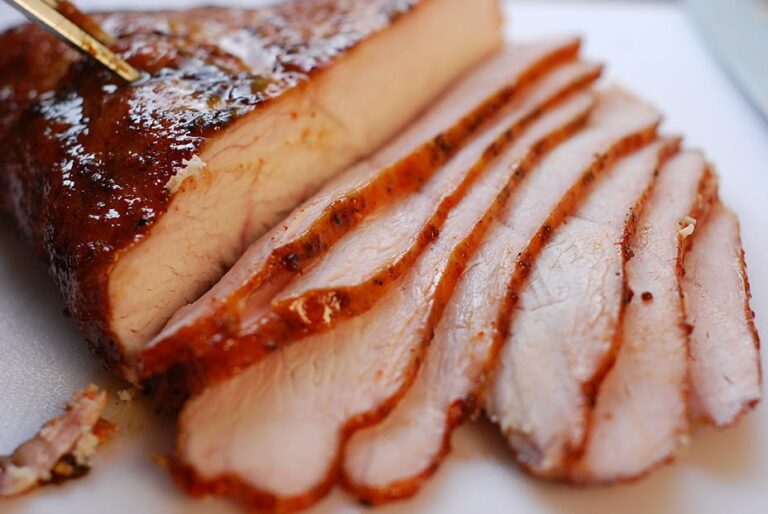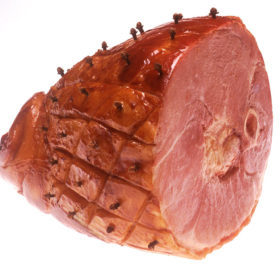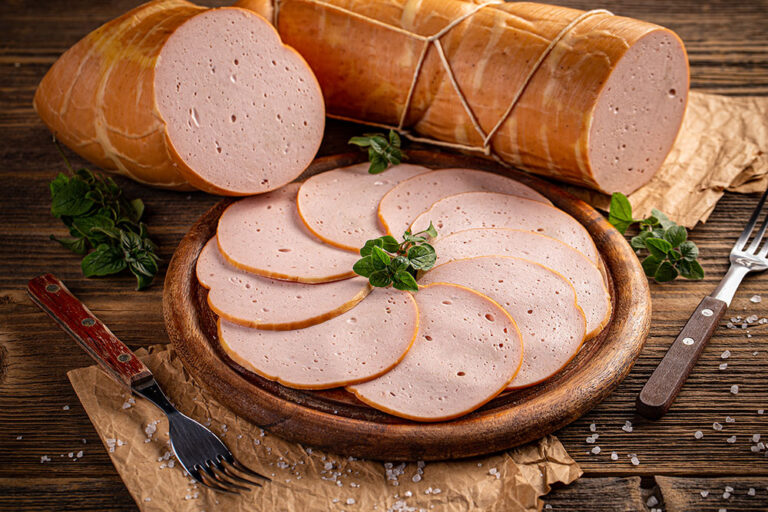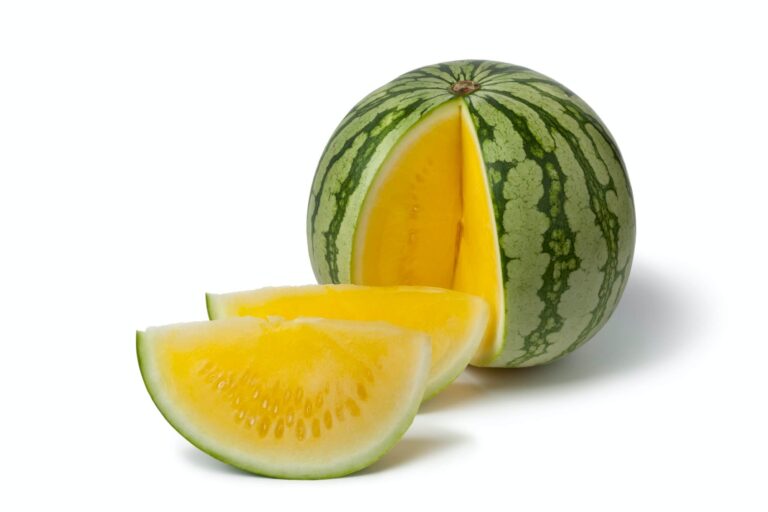Meat And Cheese Pairings isn’t just about taste—it’s about crafting an unforgettable dining experience. The right combination can elevate your dinner party, impressing guests with flavor, texture, and balance. Whether you’re working with creamy brie or smoky salami, these pairings unlock a world of rich, complementary flavors. Ready to wow your guests? Let’s explore how to make every bite memorable.
Understanding Flavor Profiles
When pairing cheeses and meats, understanding flavor profiles is the key to creating combinations that excite the palate. By recognizing how different tastes and textures work together (or against one another), you can create pairings that leave a lasting impression on your guests. Let’s explore these crucial aspects in detail.
Basic Flavor Pairing Principles
A successful pairing is rooted in balance. The idea is either to complement or contrast flavors that create harmony. Here’s how:
-
- Complementary Flavors: These are ingredients that share similar characteristics, like buttery brie matching with silky prosciutto. This synchronicity enhances each element without overpowering.
-
- Contrasting Flavors: Think of opposites: a salty hard cheese paired with a sweet honeyed ham. The stark difference creates an intriguing bite every time.
It’s not just about taste, though—consider texture and aroma. A creamy cheese might pair poorly with a soft meat, as both lack the needed contrast. Instead, aim for combinations like crumbly blue cheese with a thin, robust slice of bresaola. This mix of textures elevates the dining experience.
Common Flavor Profiles in Cheeses
Cheeses aren’t just one-note—each has its own complexity and nuances that influence how it pairs with other foods. Below are some of the most common flavor profiles:
-
- Creamy: Soft and indulgent cheeses like Camembert and mascarpone. These work well with meats that add structure, like cured pork or crispy pancetta.
-
- Sharp: Strong, tangy flavors found in cheddar or aged Gouda. Perfect alongside robust meats like salami.
-
- Nutty: Think of Gruyère or Emmental. This category shines when paired with salty prosciutto or jamón serrano.
-
- Tangy: Acidity-forward cheeses like goat cheese bring a bright, refreshing quality. They go beautifully with milder, slightly sweet meats like honey-roasted ham.

Photo by Campbell Downie
The best part? Cheeses often change flavor with time, making your chosen pairing even more interesting as it evolves.
Common Flavor Profiles in Meats
Meats, much like cheeses, have their own range of flavors influenced by preparation methods, spices, and curing processes. Below are some typical profiles to consider:
-
- Salty: Many cured meats, like prosciutto or pancetta, fall into this category. These meats balance wonderfully with creamy, mild cheeses.
-
- Savory (Umami): Think smoked sausages or rich pâtés. These meats beg for bold companions like aged or sharp cheeses.
-
- Spicy: Pepper-encrusted salami or chorizo packs heat. Pairing these with mild, creamy cheeses like burrata cools the intensity, creating delicious equilibrium.
Key tip: Experiment with how condiments—like honey, mustards, or jams—dynamically change the flavor relationship between Meat And Cheese Pairings . They often enhance existing harmonies or tie contrasting elements together.
Understanding these profiles isn’t just essential—it’s how you go from a basic charcuterie board to a true culinary delight. By mastering these elements, your dinner party becomes unforgettable, one pairing at a time.
Popular Meat And Cheese Pairings
Selecting the right Meat And Cheese Pairings can transform a simple platter into a culinary masterpiece. From familiar combinations to bold and unexpected choices, each pairing has the potential to surprise and delight your guests. Let’s explore some of the best options to elevate your dinner party.
Classic Combinations
Some pairings have stood the test of time, offering a perfect harmony of flavors and textures. These classics are essential for any charcuterie board.
-
- Brie and Prosciutto: The creamy, buttery flavor of Brie pairs beautifully with the salty, delicate slices of prosciutto. Add dried figs or honey for a sweet twist.
-
- Aged Cheddar and Salami: Sharp cheddar balances the rich, savory taste of salami, creating a crowd-pleasing combination that’s both robust and satisfying.
-
- Gouda and Soppressata: The nutty notes of Gouda work wonderfully with the spiced, tangy punch of Soppressata.
-
- Blue Cheese and Roast Beef: Bold blue cheese complements the umami-packed flavors of roast beef, making it a standout addition to your spread.
These Meat And Cheese Pairings are timeless for a reason—they deliver consistent, memorable flavor in every bite.

Photo by Engin Akyurt
Innovative Pairings
If you’re looking to surprise your guests, try stepping outside tradition with some creative combinations. These innovative pairings highlight unexpected flavor profiles that still work seamlessly together.
-
- Goat Cheese and Spicy Chorizo: The tart, creamy goat cheese offsets the spicy kick of chorizo for an adventurous, palate-pleasing bite.
-
- Smoked Mozzarella and Pancetta: Smoky, melty mozzarella finds its match in the savory crispness of pancetta. Add a touch of balsamic reduction for extra complexity.
-
- Camembert and Pepperoni Chips: The rich, velvety Camembert is surprisingly delicious alongside crispy pepperoni chips, offering bold flavors with a fun textural contrast.
-
- Havarti and Duck Sausage: The creamy, buttery texture of Havarti complements the gamey, slightly sweet flavor of duck sausage in a refined yet unexpected way.
Encourage experimentation with flavors on your charcuterie board—some of the best discoveries come from trying something new.
Regional Specialty Meat And Cheese Pairings
Meat And Cheese Pairings from the same region often results in impeccable synergy. Their shared origins tend to create natural flavor connections.
-
- Italian Parmigiano-Reggiano and Prosciutto di Parma: This classic Italian duo brings together salty, nutty Parmesan and tender, buttery prosciutto.
-
- French Roquefort and Duck Rillettes: The sharp, tangy taste of Roquefort pairs beautifully with the rich, silky texture of duck rillettes.
-
- Spanish Manchego and Jamón Ibérico: Manchego’s aged, nutty flavor teams up with the earthy, luxurious taste of Jamón Ibérico for a match made in heaven.
-
- Swiss Gruyère and Bündnerfleisch: This partnership of nutty Gruyère and air-dried Swiss beef highlights the best of Alpine flavors.
Regional pairings not only taste fantastic but also tell a story—perfect for sparking conversation at your dinner party.
The beauty of cheese and meat pairings lies in their versatility. Whether you’re keeping it classic, exploring creative combinations, or drawing inspiration from global traditions, each pairing turns a simple board into something extraordinary.
Tips for Assembling a Charcuterie Board
A well-curated charcuterie board is more than food; it’s a visual and culinary statement. Building one from scratch can feel overwhelming, but with the right approach, you can create a masterpiece that wows your guests. Here’s how to assemble a board that looks as good as it tastes.
Choosing the Right Board and Utensils
The foundation of your board sets the tone. Not all boards are created equal, and the right one can elevate your presentation. Opt for materials like wood, slate, or marble—they lend a professional and polished feel.
-
- Size matters: Choose a board that accommodates your ingredient variety without overcrowding but doesn’t look sparse.
-
- Shape counts: Circular, rectangular, or rustic live-edge boards offer different vibes—pick what fits the mood.
-
- Essential utensils: Include small cheese knives, tiny forks, and spreaders for easy serving. Bonus tip: Labeling items with tiny markers or cards prevents confusion for guests.
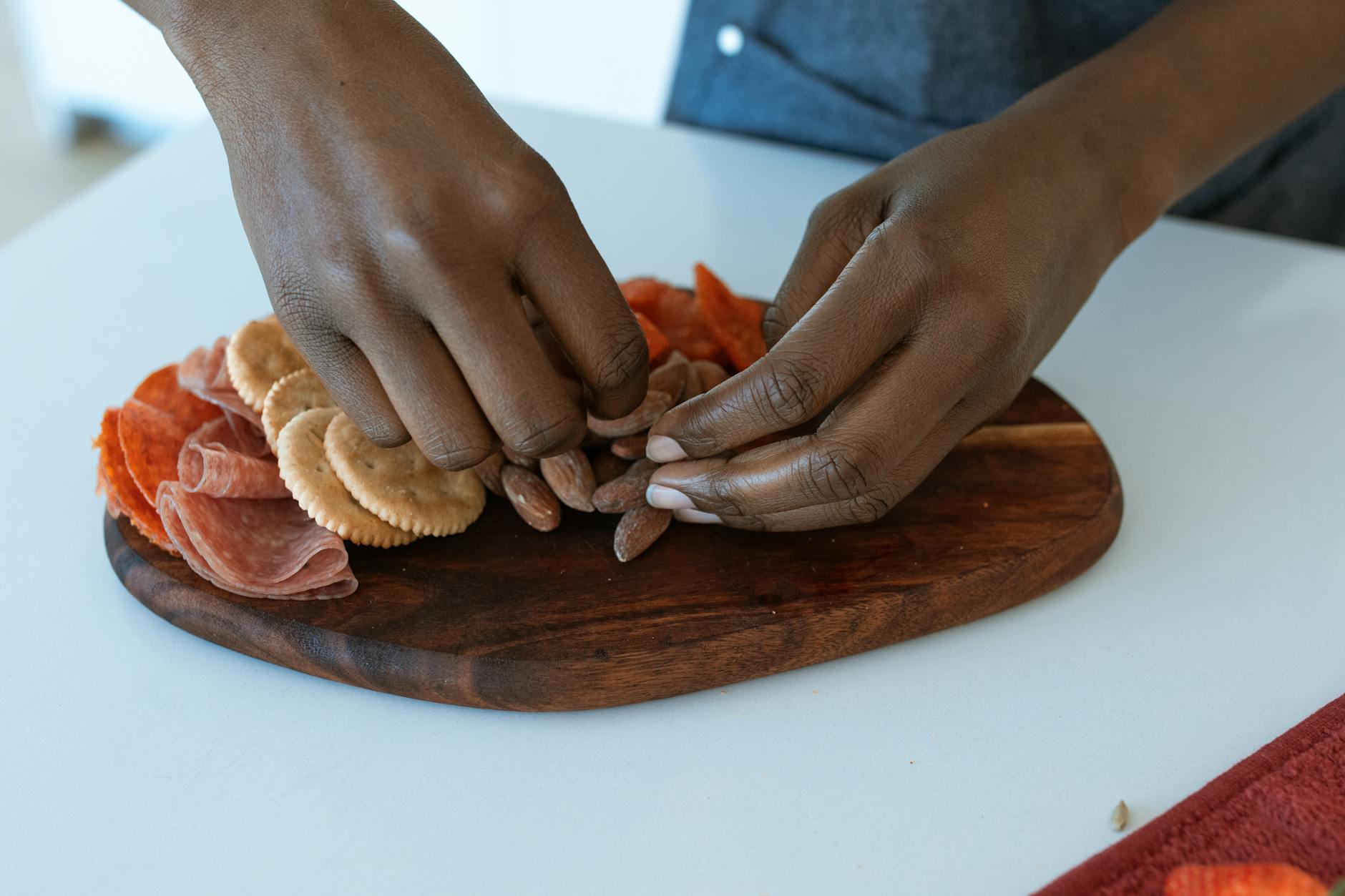
Photo by RDNE Stock project
Arranging Meat And Cheese Pairings
The arrangement can make your board inviting and practical. A visually balanced board draws attention and keeps guests coming back for more.
-
- Placement is key: Start by positioning cheeses evenly across the board. This anchors the layout.
-
- Fold and fan meats: Create textures with ruffles or tight folds. Think salami “roses” or prosciutto ribbons.
-
- Use levels: Adding small bowls or risers includes height variety—great for mini-pickles or nuts.
-
- Fill gaps: Use crackers, fruits, or herbs to fill spaces. This prevents the board from looking too bare.
Pro tip: Avoid overcrowding ingredients; a little breathing room highlights each component without overwhelming the eyes or palate.
Incorporating Accompaniments
Meat And Cheese Pairings may be the stars, but accompaniments add those complementary bursts of flavor and texture. The variety keeps things fun and satisfying for a wide range of tastes.
-
- Fruits: Add freshness with grapes, slices of pear, or dried apricots.
-
- Nuts: Roasted almonds or candied walnuts bring crunch and richness.
-
- Condiments: Jams, honey, and mustards amplify flavors. Truffle honey or fig jam can be instant game-changers.
-
- Crackers and bread: Offer an assortment—something crusty, something buttery, and crackers with a hint of seasoning.
Tip: Think of the board as a balance of salty, sweet, creamy, and crunchy. Each bite should tell its own delicious story.
By thoughtfully assembling your charcuterie board, you turn a simple appetizer into an experience. Start with these tips, and your dinner party centerpiece will be one to remember.
Beverage Pairings to Enhance the Experience
Pairing the right beverages with your Meat And Cheese Pairings selections can elevate flavors and textures, creating a truly unforgettable experience. Whether you prefer wine or non-alcoholic options, the ideal drink adds a complementary dimension to the meal.
Wine Pairings
Wine and charcuterie go hand in hand, thanks to their shared ability to enhance taste through contrast and harmony. The key to a perfect match lies in balancing the boldness of the wine with the intensity of the cheese or meat.
-
- Soft Cheeses and Light Reds: Creamy cheeses like Brie or Camembert shine with Pinot Noir or Beaujolais. Their silky textures pair effortlessly with light, fruity reds.
-
- Hard Cheeses and Bold Reds: Sharp cheddar or aged Gouda demand wines like Cabernet Sauvignon or Malbec to balance their intensity with structured tannins.
-
- Salty Meats and Sparkling Wine: Cured meats like prosciutto or jamón serrano pair beautifully with Prosecco or Champagne, as the bubbles cut through the saltiness.
-
- Tangy Cheeses and Sweet Whites: Goat cheese or blue cheese marries well with Riesling or Moscato, as the sweetness offsets their tangy flavors.
-
- Smoky Meats and Woody Reds: Smoked sausages or pancetta find a flavorful counterpart in Syrah or Zinfandel, which emphasize their robust, smoky notes.

Photo by ROMAN ODINTSOV
Pro Tip: When in doubt, sparkling wine is versatile and pairs well across a broad range of cheeses and meats.
Non-Alcoholic Options
For those who prefer non-alcoholic beverages, there are plenty of options that complement the rich flavors of cheese and meat. The focus here is on balancing acidity, sweetness, and effervescence.
-
- Tea: Pair black tea with salty cured meats or green tea with soft cheeses for a clean, refreshing palate cleanser.
-
- Sparkling Water with Herbs: Add a sprig of rosemary or basil to sparkling water to enhance its subtle, aromatic qualities when paired with mild cheeses.
-
- Fruit Juices: Tart options like cranberry or pomegranate juice accentuate the creaminess of cheeses like Gouda or Havarti.
-
- Kombucha: The tangy effervescence of kombucha works particularly well with nutty cheeses or aged meats.
-
- Mocktails: Create a citrus-based mocktail, such as a mix of lemonade, ginger, and soda water, to pair with spicy meats like chorizo or pepperoni.
For bold flavors, try pairing sharp cheddar or smoky pancetta with a robust, non-alcoholic red wine alternative. This provides depth without overpowering the platter.
By thoughtfully selecting beverages to complement your charcuterie board, you bring out the best in both the food and drink, enhancing the entire dining experience.
